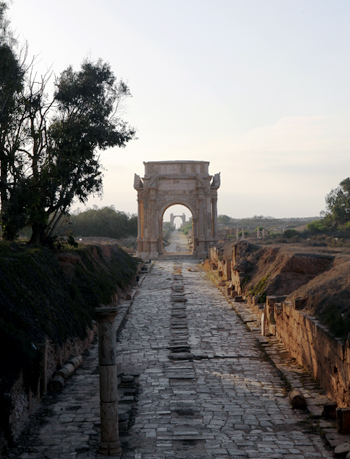A revived Libyan tourism sector could prove the second largest earner in Libya
Libya Sector Analysis
A revived Libyan tourism sector could prove the second largest earner in Libya
The desert country of Libya has much to offer the world traveler, both historical and the evolving, vibrant new Libya, freed from dictatorship.

A revived Libyan tourism sector could prove the second largest earner in Libya
By TK Maloy
TRIPOLI – The desert country of Libya has much to offer the world traveler, both historical and the evolving, vibrant new Libya, freed from dictatorship.
Rich in history, the country has five UNESCO World Heritage sites which include a panoply of ancient Roman and Greek ruins and prehistorical sites as well. And perhaps the largest attraction of all is the simplest; the deserts of Libya, where tourist can organize tours visiting for the day or longer.
During a recent conference in the capital city of Tripoli on tourism, a number of experts estimated that tourism could be Libya’s second biggest earner after oil. Though Ikram Abdulsalam Iman, the Minister of Tourism, noted that development plans for this sector are facing the challenge of not having sufficient resources to build the sector quickly or having enough workers with the needed skills for launching a successful tourism industry.
Rich in history, the country has five UNESCO World Heritage sites which include a panoply of ancient Roman and Greek ruins and prehistorical sites as well.
The Libya Herald reported that Ms. Iman said “The ministry does not have enough terms of reference in order to work on the implementation of programs freely.”
But, challenges aside, there are great expectations for tourism in the new Libya, once the sector gets up and running.
The conference was organized in cooperation with the UN’s World Tourism Organization (WTO) whose Secretary-General, Taleb Rifai, attended the event. The focus of the meeting was establishing the requirements for developing tourism in Libya, both for the income it could produce and the jobs it could create.
During the conference it was estimated that a revived tourism sector could create hundreds of thousands of jobs in the tour and hospitality industry in Libya. Potentially making it one of the largest employee sectors in a country that is reconstructing after the 2011 rebellion. Also, this would be in keeping with government plans to diversify from dependence on oil.
According to the Ministry of Tourism, there are plans to encourage the private sector to play a role in the tour industry’s revival.
The WTO Secretary-General noted that Libya should emphasize this sector given the economic multiplier effect it would have for the country in terms of cash flow and increased jobs.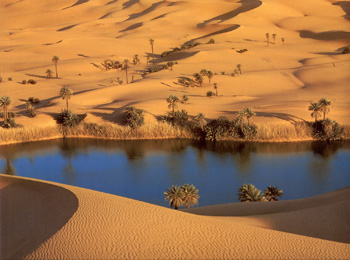
The Libyan Ministry of Tourism main brief is tourism, promotion, planning, investment training, tourism service control, and inspection, international cooperation, and documentation and information.
Visiting World Heritage sites
During a recent interview with Reuters at the Roman ruins near the coastal city of Sabratha, tour guides said they were still awaiting a post-revolution influx of foreign travelers.
They said that the area formerly attracted more than 20,000 foreign visitors annually during the Gaddafi regime.
“The numbers are low these days, people no longer come to Libya as tourists. Our visitors are people who already work in Libya or those who travel here on business trips,” Mohammed Bujila, head of the antiquities department at Sabratha told Reuters.
“Things are different because of the problems we have but we hope that maybe next year, tourism will begin again,” he told the news agency.
Tourism officials are hoping that under the democratic reforms taking place, more Europeans, Americans and visitors from the GCC countries will consider Libya a viable tour spot. In addition to its World Heritage sites and other ancient edifices, and the getaway of visiting the desert, the country boasts 1,700 km (1,056 miles) of coastline.
Security worries
And while the tour guides are ready for a large influx, new hotels and restaurant are being built in Tripoli and air services have resumed regular flights to the country – but the one key challenge that is keeping visitors away: security worries.
In an earlier story, Marcopolis examined how the country is still awash in armed militias after the revolution – with some joining the official armed forces or working on behalf of the government – while others operate with autonomy. Not all independent militias are necessarily bad, with armed groups guaranteeing security in various cities, but at the same time there has been some internecine fighting between groups, and some armed militias essentially acting as brigands. (see “Current Security Situation, July 3” http://www.marcopolis.net/current-security-situation-in-libya-latest-overview-0307.htm)
Ms. Iman, the tourism minister, told Reuters that “Tourism is a mark of stability in a nation,” adding, “We need a very high level of security for people to come. We don’t deny that there are some problems but this is normal after a war.”
Similar problems are confronting Lebanon, were sectarian tension have resulted in two successive summers of most GCC countries issuing strict warnings to their citizens not to visit. In the case of Libya, beyond security worries, is the simple fact that the country is decades behind in tourism sector development, which in recent years has become a sophisticated industry.
“Libya is already behind by four decades in this sector,” Taleb Rifai, secretary general of the UN’s World Tourism Organization, told a news conference on a recent visit to Tripoli. “There is no more time to waste.”
Starting with the 2003 lifting of sanctions over the 1988 commercial jet bombing over Lockerbie, Scotland, visitors slowly began to return to Libya. In 2010, the year before the revolution, the country attracted over 32,000 visitors from outside North Africa and the GCC countries, according to officials.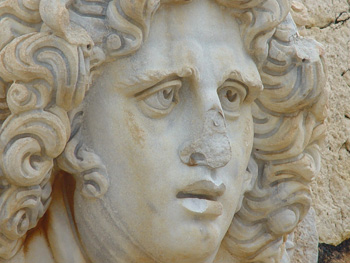
In a survey of global tourism professionals, World Travel Market Industry Report found that 56 percent of those tourism experts polled believed that Libya has all the ingredients in order to become a major world destination. This was with the caveat, however, that tourism would increase along with political stability and improved infrastructure.
Biggest tourism attractions in Libya
Some of the country’s biggest attractions include the Roman city Leptis Magna, sleeping under the clear night sky in the desert; visiting the desert oasis town of Ghandames and even the late Colonel Gaddafi’s infamous Tripoli compound is on display.
A word on Leptis Magna: If a visitor is to see the top archaeological site of the country then Leptis is the place to visit. It is regarded as the Roman ruin in the Mediterranean, with spectacular architecture said to “impress even the most ruin-weary traveler.” It is 130 km east of Tripoli, on the coast.
For desert lovers, Lonely Planet suggests Jebel Acacus in south-west Libya, characterized by an other-worldly landscape of dark basalt monoliths rising up from the sands of the central Sahara. “This World Heritage-listed area is home to unique natural rock formations, as well as prehistoric rock paintings and carvings, some of which date back 12,000 years. You can only visit the region with a guide, who can be organized in Ghat,” the LP guide said.
In addition to tourist attractions, there is the rich and diverse culture of Libya to attract visitors, according to Cultural Minister Habib Mohammed Al-Amin.
“Libyan culture has a mosaic of varieties, and that adds more value to the 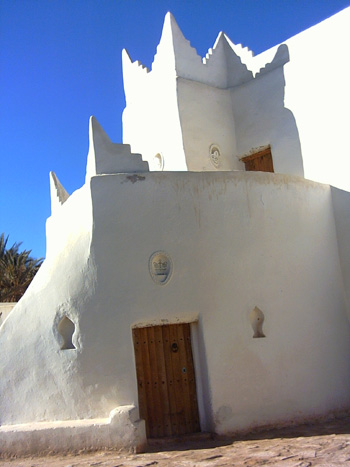 Libyan culture, as we have different cultural environments when it comes to folk arts, architecture, poetry, music,” said the Cultural Minister. “So we can say that Libya is a continent, and just like Herod said that everything other than Egypt is Africa, and that was called Libya.”
Libyan culture, as we have different cultural environments when it comes to folk arts, architecture, poetry, music,” said the Cultural Minister. “So we can say that Libya is a continent, and just like Herod said that everything other than Egypt is Africa, and that was called Libya.”
“And now, during this new democracy, the culture will have better places and chances in order to let the Libyans say and share what they want as humans,” the minister added. “So they will have freedom to listen, say and paint their lives with what they want and write down beautiful words they like.”
According to Euromonitor International, a management consulting firm, “Libya has been home to a number of tourist sites that have never been fully developed, and has the potential to successfully compete with regional destinations such as Morocco, Tunisia and Egypt.”
“After having remained closed to the outside world for decades, the country had already started opening up in the last few years before the fall of Gaddafi,” added Euromonitor. “With the right strategy and once a solid government is in place to implement it, Libya may become a leading tourism destination…”
Some top spots to visit in Tripoli include: The Arch of Marcus Aurelius, Tripoili’s Medina, Martys’ Square, the Jamahirya Museum, Fish Souk, the Pottery Stalls in Gayran, and Tripoli’s Red Castle (Assai al-Hamra).
Also there is the House of Yusuf Karamanli which dates from the beginning of the 19th century and was the private residence of Tripoli’s former ruler; then there is the still functioning Hammam Draghut, in the Medina, with various hours for women and men patrons.
In north-east, the Cyrenaica region, tour guides say the ancient city of Cyrene ranks as a must see. It is the best preserved of the Greek cities in the Mediterranean, with its temples, tombs, agora, gymnasium and theatre originally modeled on those at Delphi. “Apart from the spectacular Greek ruins, its location high on a bluff overlooking the sea is stunning,” The Lonely Planet guide notes.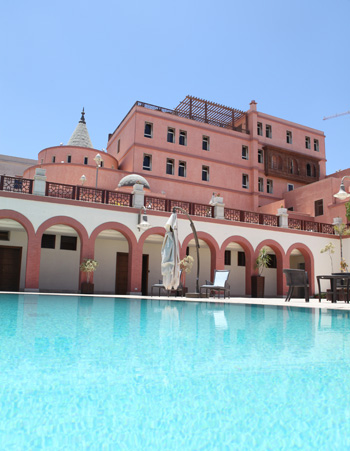
Benghazi, the city the lead the rebellion against Gaddafi is the capital of the Cyrenaica region and is like Tripoli is working toward defining itself as a business center.
Some of the most favorable views of the city are a night because of Benghazi’s penchant for colorful lights. For those touring the city, you will want to sojourn in one of the many parks, the most famous of which is al-Bosco, the zoological garden park. Also 23 July Park is highly recommended for a visit for its sheer beauty.
At night, visit outside the Al Da’waa al-Islamiya office building, for its stunning outdoor lighting. And don’t forget to walk over the Juliana Bridge.
For a look at the historical past of Benghazi as characterized by the old architecture still extant, tour the Green Old Downtown.
Tour guides suggest for first-time visitors, an itinerary based around tours of the two main cities of Tripoli and Benghazi, with day excursion (or longer) in each city, which have daily connecting flights.
Deciding on where to stay in Libya? Check out Al Waddan Hotel in Tripoli, the oldest and one of the best hotels in Libya.
For additional information: The Ministry of Tourism, Tel. +218 (21) 333 0913, Fax. +218 (21) 360 3145.
Simoon Travel (+44 020 978 0508; www.simoontravel.com) or Temehu (www.temehu.com) are two tour agencies that come highly recommended.
